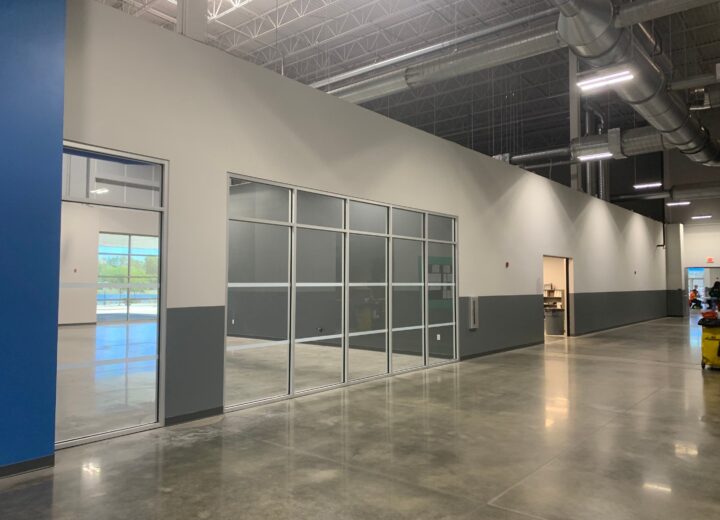
Moisture can be an issue for industrial buildings, especially in coastal regions. If you are in a high humidity area, any place that you go has the potential to encounter some moisture problems.
The effects from high moisture can be expensive to repair or replace, be it in your home, or in a industrial building. Not only can damage be done to a structure, but moisture infringement can lead to health issues as well. We are constantly reminded of this in the news when they report on mold or bacterial problems that have affected the health of employees working in high risk areas. Such building intrusions are then labeled as “sick buildings”, which is a shame since in most instances this could have been avoided.
There are ways to help prevent some moisture problems. With proper preparation and coatings, you can prevent a lot of common issues. If you manage a structure that does not have a protective coating, you really should consider contacting a licensed painting company, as it can help reduce future problems and costs.
Today we have the opportunity to work with some exceptional waterproof coatings. These coatings can not only protect structures that we work in, but they can also be applied to other things within industrial buildings. For example, industrial machinery. Waterproof coatings can help to protect walls, floors, roofs, piping and many other things.
Preventative Measures
Some of the measures that can be taken to prevent moisture problems are:
- Inhibiting external vapor interaction
- The use of non-moisture absorbing insulation
- Utilizing industrialized coatings that are anti-condensation
If these measures are made in the construction phase of a building, then you can expect your building to have defenses against moisture for a time. There are also factors to consider that may exacerbate the issue. Air temperatures that vary from hot to cool can help to create mold, bacteria and mildew. Poor construction and even weather catastrophes can lead to conditions that facilitate bacteria and mildew as well.
Industrial implements, ducts, tanks and storage vessels can also be covered by a protective paint layer. This way they too can be protected from any moisture rich environment, temperature variations and heat barriers. If you have over fifty percent relative humidity within your facility, then you run the risk of allowing microbiological growth.
Moisture Management Coatings
With a variety of coatings to choose from, it can be quite confusing to know what is best for your particular building.
Some of the most used coatings are:
- Elastomeric – Also recognized as acrylic latex or latex. It can be water-based or latex based. This is widely used on concrete, steel and wood substrates and is extremely pliable. It is created to endure the extensive forces of wind and rain. Elastomeric coatings are one of the top waterproof coatings used in zones containing high moisture and offers an extended protection period.
- Ceramic – This coating is great to use in areas that need to be fortified from dampness. Ceramic coatings were created with the same principle that is used on space shuttle tiles, which can withstand a great deal of force. Not only it is water resistant, but it also stands up to ridged temperatures and UV radiation. There are variations to this coating, so if you are looking at using this form you should talk to a professional that works with it frequently to help determine what mode would be best for your requirements. This coating is not as pliable as elastomeric coatings.
- Epoxy – Formed from epoxy resin and a polyamine hardener. Once combined, it can give you a well-protected surface. It is characteristically applied to steel and concrete substrates due to its water-resistant properties. This is the least flexible of the three types of coatings.
We have gone over just three types of coatings that can be utilized for moisture protection, but many others can be used as well. If you have a different preference for your moisture management needs, you should contact a specialist in your vicinity that could give you the information that you need.
No matter how big or small your structure is, some very knowledgeable professionals can sit down with you and go over what needs to be done, how much it will cost, and can get the job done quickly for you. The sooner you get your structure protected from the elements the better!






